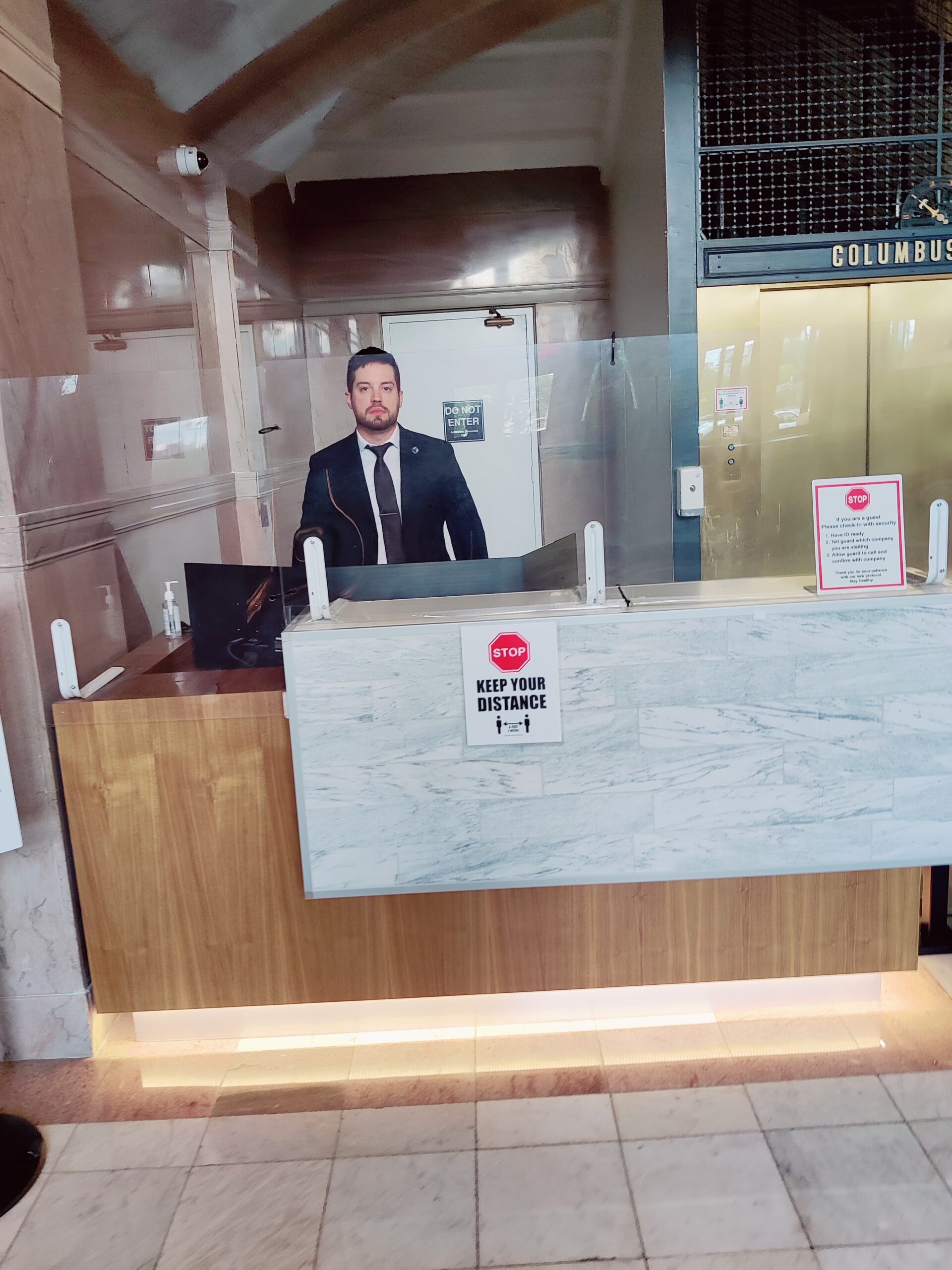Retail loss prevention isn’t a set-it-and-forget-it operation—especially when your store traffic fluctuates dramatically throughout the year. The approach that works during your quiet season simply won’t hold up when holiday shoppers flood your aisles and temporary staff man your registers.
For retailers facing seasonal shifts, adaptability in loss prevention isn’t just beneficial—it’s essential for survival. With temporary employees, increased inventory, and higher customer volume all creating new vulnerabilities, your LP strategy must evolve just as your business does. New England Security specializes in creating flexible loss prevention systems that scale with your needs, ensuring your security measures remain strong even as other aspects of your operation flex under seasonal pressure.
The Critical Retail Loss Challenge During Seasonal Shifts
The retail calendar brings predictable challenges that many loss prevention teams still approach with surprisingly rigid tactics. Holiday seasons bring a perfect storm of risk factors: inexperienced seasonal employees handling transactions, crowded sales floors making shoplifting easier to conceal, and inventory overflows that complicate accurate tracking. These elements combine to create protection blind spots that savvy thieves and dishonest employees quickly learn to exploit.
The numbers tell a sobering story for retailers who fail to adapt. Internal theft incidents increase by up to 30% during seasonal hiring periods, while external shoplifting attempts can surge by as much as 37% during holiday rushes. Without scaling your loss prevention approach to match these intensified threats, you’re essentially leaving your door open to shrinkage when your profit margins matter most.
Why Seasonal Loss Prevention Adaptability Matters Now
Today’s retail environment faces unprecedented challenges that make adaptive loss prevention more crucial than ever. E-commerce competition has thinned profit margins, making every dollar lost to theft or error increasingly painful to your bottom line. Meanwhile, organized retail crime has grown more sophisticated, with professional thieves targeting businesses during busy periods when they know security resources are stretched thin.
The pandemic has further complicated matters by creating unpredictable shopping patterns and staffing challenges. Many retailers now operate with leaner permanent teams, making the seasonal influx of temporary workers an even more significant security vulnerability. Without loss prevention systems that can easily scale up during these critical periods, retailers find themselves perpetually playing catch-up with evolving threats.
Holiday Season Theft Surge: The Numbers You Can’t Ignore
The holiday season brings a troubling surge in retail theft that demands immediate attention. Internal theft increases by 30% during seasonal hiring periods, with temporary employees responsible for a disproportionate percentage of inventory shrinkage. External theft also spikes dramatically, with organized retail crime targeting busy stores where their activities are harder to detect amid the chaos.
Most alarming is that these losses occur precisely when retailers can least afford them. The final quarter represents between 30-40% of annual profit for many retailers, meaning that holiday-period shrinkage has an outsized impact on yearly performance. Without scalable loss prevention strategies, these predictable surges continue to erode retail profitability year after year.
Holiday Season Loss Prevention By The Numbers
• 30% increase in internal theft during seasonal hiring periods
• 37% surge in shoplifting attempts during peak shopping days
• 40% of annual profit typically generated during holiday season
• 22% higher shrinkage rates for retailers without adaptive LP strategies
• 3x return on investment for retailers who scale LP resources seasonally
The True Cost of Static Loss Prevention Strategies
The financial impact of failing to adapt your loss prevention approach extends far beyond the immediate value of stolen merchandise. Static LP strategies create cascading costs that affect virtually every aspect of retail operations. Inventory discrepancies lead to poor restocking decisions, while unaddressed theft patterns allow problems to compound over time rather than being corrected early.
Perhaps most costly is the resource inefficiency of non-adaptive approaches. Many retailers maintain the same security staffing levels year-round, meaning they’re either overstaffed during slow periods or dangerously understaffed during peaks. Similarly, static technology deployments often mean expensive systems sit underutilized for months while being inadequate when most needed.
How Shrinkage Multiplies During High-Volume Periods
Retail shrinkage doesn’t increase linearly during high-volume periods—it multiplies exponentially when preventive measures don’t scale accordingly. This multiplication effect occurs because high traffic creates a perfect environment for theft: more customers mean more opportunities for shoplifters to blend in, more transactions create more chances for register manipulation, and busier staff have less time to monitor suspicious behavior.
Inventory management becomes particularly vulnerable during these periods. As stock rooms overflow with holiday merchandise and daily deliveries increase, tracking accuracy naturally decreases. Without adaptive controls that account for this seasonal volume surge, discrepancies often go unnoticed until January inventory counts reveal the damage—long after correction is possible.
5 Signs Your Loss Prevention Strategy Isn’t Ready for Seasonal Changes
Before peak seasons arrive, retailers need to honestly assess whether their LP approach can handle the coming pressure. Most failing strategies show clear warning signs long before major losses occur. Recognizing these indicators early allows for proactive adjustments rather than reactive damage control after shrinkage has already impacted your bottom line.
The most successful retailers conduct seasonal readiness assessments at least 90 days before their busiest periods. This timeline provides sufficient opportunity to implement new technologies, adjust staffing models, and train team members on season-specific protocols. Those who wait until seasonal rushes begin find themselves implementing changes during their most chaotic operational periods—a recipe for implementation failure.
1. Unchanging Staffing Levels Despite Traffic Fluctuations
When your customer traffic doubles or triples during peak season but your loss prevention headcount remains static, you’ve created an unsustainable security gap. Effective LP coverage requires maintaining a consistent ratio between security personnel and store activity. Without this balance, even the most sophisticated security technology becomes ineffective without human resources to respond to alerts and address incidents.
Leading retailers develop flexible staffing models that establish clear formulas for scaling security personnel based on projected traffic patterns. These models often include part-time LP specialists who work primarily during peak seasons, creating a scalable workforce that expands and contracts with business needs rather than maintaining costly year-round coverage that’s unnecessary during slower periods.
2. Technology That Can’t Scale With Demand
Legacy loss prevention systems often become bottlenecks during high-volume periods. Fixed-capacity video systems may deteriorate in quality when additional cameras are added, while on-premise software solutions frequently crash when transaction volumes spike beyond their designed capacity. These technology limitations create coverage gaps precisely when comprehensive monitoring is most critical.
Modern loss prevention demands technology infrastructure that scales effortlessly with seasonal demands. Cloud-based systems with on-demand resources and bandwidth represent the gold standard for adaptable retail security, eliminating the performance degradation that typically accompanies traffic increases with traditional systems. For businesses looking to enhance their security measures, incorporating
mobile patrol services can provide an additional layer of protection and adaptability.
3. One-Size-Fits-All Protocols Across All Seasons
Using identical security protocols year-round ignores the fundamental reality that theft patterns change dramatically with the seasons. Holiday shoplifting tactics differ significantly from those employed during back-to-school season or summer months. Retailers with static protocols effectively prepare for last season’s threats while remaining vulnerable to current ones. Understanding the role of a
retail loss prevention officer can help adapt these protocols to be more dynamic and responsive.
Adaptive loss prevention requires seasonal protocol adjustments based on historical theft data and current trend analysis. These adjustments might include modified bag check policies during gift-buying seasons, enhanced fitting room monitoring during apparel-heavy periods, or specialized register verification during gift card promotions. The most effective retailers develop a seasonal playbook that activates specific protocols based on the unique risk profile of each retail period.
4. Reactive Rather Than Predictive Responses
Waiting until theft patterns emerge before adjusting your strategy guarantees preventable losses. Reactive approaches allow initial thefts to succeed while you gather data, essentially sacrificing early losses to prevent later ones. This backward-looking approach becomes particularly costly during short, intense selling seasons where a significant portion of theft can occur before reactive measures take effect.
Predictive loss prevention leverages historical seasonal data and current retail intelligence to anticipate and counter likely theft scenarios before they materialize. This forward-looking approach deploys resources based on projected risk areas rather than confirmed losses, preventing the initial theft incidents that reactive systems must sacrifice as learning opportunities.
5. Poor Communication Between LP and Seasonal Staff
When seasonal employees receive minimal loss prevention training, they transform from potential security assets into significant vulnerability points. Temporary staff who don’t understand your
loss prevention protocols can’t assist in their enforcement, creating a substantial blind spot in your security coverage exactly when you need all hands on deck.
Effective seasonal scaling requires streamlined communication channels between loss prevention specialists and temporary team members. The best retail operations develop simplified LP onboarding modules specifically designed for seasonal staff, focusing on high-impact security practices that temporary employees can realistically implement alongside their primary responsibilities.
Smart Technology Solutions for Seasonal LP Scaling
Technology forms the backbone of any truly scalable loss prevention strategy. Unlike human resources, which require extensive training and onboarding periods, technology solutions can often be deployed rapidly to address emerging seasonal needs. The key is selecting systems specifically designed for flexibility rather than static solutions that cannot adapt to changing conditions.
Cloud-Based Systems That Grow With Your Needs
The most adaptable loss prevention technologies leverage cloud infrastructure, enabling retailers to expand monitoring capacity during peak seasons without permanent hardware investments. Cloud-based video surveillance and transaction monitoring systems can instantly scale up processing power and storage when holiday traffic intensifies, then scale back during slower periods to minimize ongoing costs.
These systems offer particular value for retailers with dramatic seasonal fluctuations. A summer beach retailer might need minimal surveillance during winter months but require comprehensive coverage during tourist season. Cloud solutions enable this flexibility without the capital expenditure of systems permanently sized for peak demand.
New England Security provides cloud-based loss prevention solutions that adapt to your seasonal business rhythm, ensuring you maintain optimal security coverage without overspending during slower periods.
AI-Powered Analytics for Seasonal Theft Pattern Detection
Artificial intelligence represents the cutting edge of adaptive loss prevention, with systems that can identify emerging theft patterns before human analysts might notice them. These platforms analyze transaction data, video feeds, and inventory movements to flag suspicious activities that correlate with historical theft indicators.
The real power of AI in seasonal contexts comes from its ability to rapidly establish new behavioral baselines. As customer and employee patterns shift during holiday rushes, AI can quickly determine what represents “normal” activity for this period versus what deserves investigation. This contextual awareness prevents both security blind spots and false alarms that waste limited LP resources.
The most sophisticated systems incorporate seasonal theft data from previous years, enabling them to predict and flag high-risk scenarios before losses occur. This predictive capability transforms loss prevention from a reactive function into a proactive one, substantially reducing seasonal shrinkage.
Mobile LP Tools for Temporary Staff
Equipping seasonal employees with simplified mobile loss prevention tools creates a force multiplier effect during busy periods. Smartphone-based applications can provide temporary staff with streamlined reporting mechanisms, visual identification guides for known offenders, and instant communication channels to alert security personnel to suspicious activity.
These mobile solutions require minimal training while dramatically expanding your effective security coverage. A seasonal employee who can instantly report suspicious behavior through a simple app becomes a valuable extension of your formal LP team, creating comprehensive store coverage that would be impossible to achieve through dedicated security staff alone.
Additionally, mobile technologies enable remote monitoring capabilities that help stretched LP teams cover multiple locations simultaneously. Senior loss prevention specialists can receive real-time alerts, view live camera feeds, and provide guidance to on-site staff from anywhere, allowing one expert to effectively support multiple store locations during peak periods. For more insights, read about
a day in the life of a retail loss prevention officer.
Staffing Strategies That Flex With Seasonal Demands
While technology provides the foundation for scalable loss prevention, human resources remain equally critical to seasonal security success. The most effective retailers develop multi-layered staffing approaches that combine core LP professionals with cross-trained regular employees and strategically deployed
temporary security personnel.
This hybrid approach provides both the specialized expertise needed for complex security challenges and the broad coverage required during high-traffic periods. It also creates cost efficiencies by matching security staffing levels precisely to current needs rather than maintaining peak capacity year-round.
Cross-Training Regular Employees for LP Support
Your permanent staff represents an underutilized security resource during seasonal periods. By providing focused loss prevention cross-training to select regular employees, you create an expandable security team that can activate during peak periods without additional hiring. These cross-trained team members maintain their primary roles but incorporate specific LP responsibilities when seasonal demands increase.
Effective cross-training focuses on observation skills, proper documentation procedures, and escalation protocols rather than attempting to create LP specialists. The goal is developing employees who can serve as additional “security eyes” on the sales floor and who understand exactly when and how to involve dedicated
loss prevention personnel.
This approach proves particularly valuable for detecting internal theft, as regular employees often notice colleague behavior patterns that dedicated security staff might miss. Cross-trained employees working alongside seasonal hires can identify suspicious activities that would otherwise go undetected.
Rapid Onboarding Protocols for Temporary LP Personnel
When seasonal demands necessitate additional dedicated security staff, specialized onboarding protocols become essential. Traditional LP training often requires weeks—time you simply don’t have when holiday rushes begin. Effective seasonal scaling requires condensed training programs that quickly equip temporary security personnel with the specific skills needed for your peak season.
These accelerated programs prioritize practical scenarios over theoretical knowledge, focusing on the most common theft tactics you’ll face during this particular season. They incorporate extensive use of role-playing exercises that simulate actual store conditions during busy periods, preparing staff for the chaotic environment they’ll be monitoring. For further insights, consider exploring
advanced training essentials that enhance safety and readiness.
Digital training tools with virtual simulations can dramatically reduce onboarding time while ensuring consistent quality. These platforms allow temporary LP staff to practice identifying suspicious behaviors in simulated store environments, building practical skills before they ever set foot on your sales floor. For more insights, explore
a day in the life of a retail loss prevention officer.
Performance Metrics That Matter During Peak Seasons
Standard loss prevention metrics often prove inadequate during seasonal peaks when conditions differ dramatically from normal operations. Effective seasonal LP requires adjusted performance indicators that account for higher traffic volumes, increased transaction counts, and
temporary staffing.
Rather than focusing solely on absolute shrinkage numbers, the most valuable seasonal metrics examine ratios like shrinkage per 1,000 transactions or loss incidents per customer. These relative measures provide more accurate performance assessment during periods when raw numbers naturally increase with business volume.
Time-based metrics become particularly important during compressed selling seasons. The time between theft detection and resolution directly impacts your ability to prevent similar incidents during the brief seasonal window. Monitoring and continuously improving these response times ensures maximum protection during critical selling periods.
Specialized Training for Seasonal Theft Trends
Each retail season brings distinctive theft patterns that require specialized knowledge to combat effectively. Holiday periods see increases in gift card fraud and receipt manipulation, while back-to-school seasons face more organized retail crime targeting high-value electronics. LP staff needs targeted training on the specific threats relevant to each upcoming season, and this is where
conflict resolution training programs can be invaluable.
This specialized training should incorporate both historical data from your stores and industry intelligence about emerging theft trends. The National Retail Federation and retail security networks provide valuable insight into evolving tactics that may not have appeared in your locations previously but are likely to emerge.
Simulation exercises based on previous seasonal incidents provide particularly effective preparation. By reconstructing actual theft scenarios from prior years, you build pattern recognition skills that help security personnel identify similar attempts before losses occur.
Data-Driven Resource Allocation for Seasonal Protection
Strategic resource deployment becomes critically important when security demands increase but budgets cannot grow proportionally. Data analytics enable precision targeting of your limited LP resources to the highest-risk areas, maximizing protection despite constraints.
The most sophisticated retailers now employ predictive models that combine historical loss data, current inventory values, and seasonal traffic patterns to generate risk heat maps. These visualizations identify specific store zones, product categories, and time periods where additional security presence will deliver the greatest return on investment. For more insights into this field, explore
a day in the life of a retail loss prevention officer.
Using Last Year’s Loss Data to Plan This Year’s Strategy
Historical data provides the foundation for proactive seasonal planning, revealing patterns that tend to repeat annually with slight variations. Analyzing last year’s incident reports by date, time, location, and method exposes vulnerabilities that will likely recur without intervention.
The most valuable analysis drills down to specific weekdays and time blocks when incidents clustered during previous seasons. This temporal mapping enables precisely targeted staffing adjustments—perhaps adding additional coverage on Saturday afternoons when data shows shoplifting peaks, rather than spreading resources evenly across all hours. For insights into a typical day in the life of a loss prevention officer, explore
this detailed overview.
In today’s rapidly evolving retail environment, businesses must adapt their loss prevention strategies to keep pace with seasonal changes and consumer behavior. One effective approach is to incorporate
mobile patrol services, which offer flexibility and increased visibility during peak shopping periods. By deploying roving guards, retailers can deter theft, respond quickly to incidents, and ensure a safe shopping experience for customers. Additionally, investing in advanced training for security personnel can further enhance their ability to handle diverse situations effectively.





